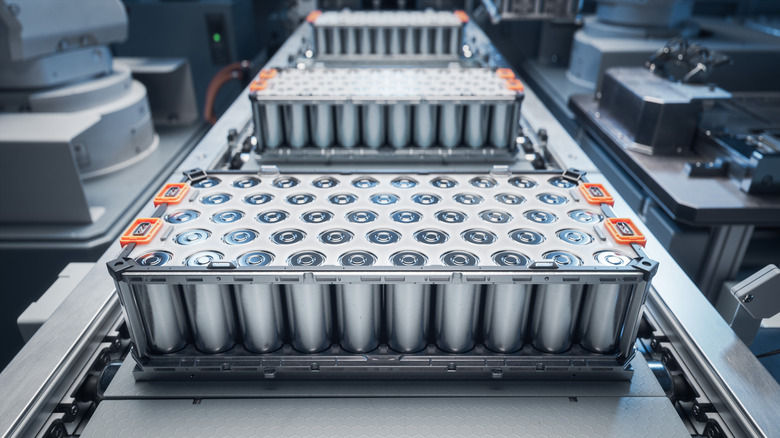
Ford EVs are showing up everywhere, and behind that push is a supply chain working hard to keep things moving. Building the kind of batteries these cars need takes a mix of planning, partnerships, and key decisions about where and how they're made.
As of mid-2025, Ford sources batteries for EVs like the great Mustang Mach-E from Poland, but that's set to change. Production is expected to shift to LG Energy Solution's plant in Holland, Michigan, sometime in 2025. Construction is also underway on a new
Ford-owned battery plant in Marshall, Michigan, set to open in 2026. Named for the company's iconic blue oval emblem, BlueOval Battery Park will manufacture lithium iron phosphate batteries, or LFPs, using licensed technology from Chinese supplier CATL. In addition to CATL, Ford is also working with SK On and LG Energy, both based in South Korea, and it receives NCM batteries from SK On's facilities in Hungary and Georgia.
The company's largest battery effort thus far is BlueOval City in Stanton, Tennessee, launching sometime in 2025. The facility will include vehicle assembly lines and a battery plant, developed in conjunction with SK On. Ford and SK are also building two additional battery factories in central Kentucky. Together, the three plants are expected to produce 129 gigawatt-hours of battery capacity each year. It's all part of Ford's strategy to bring battery production closer to home, reduce costs, and power the next generation of EVs.
Read more: Every Ford Mustang Generation Ranked Worst To Best
Ford Is Navigating EV Battery Challenges And Driving Future Growth

Batteries are a key challenge in Ford's shift to EVs. In recent years, supply issues for essential materials like lithium and nickel forced the company to rely on outside suppliers for some components. That's why Ford has been focused on bringing more battery production and processing to the U.S., aiming to create a more stable and sustainable supply chain.
At the same time, Ford's EV batteries are powering a growing lineup that includes models like the F-150 Lightning, Mustang Mach-E, and the E-Transit van. These vehicles feature longer ranges, faster charging, and connected technology that supports electric driving. Ford also plans to expand its electric offerings across both Ford and Lincoln brands, focusing on performance and sustainability as the shift to electric continues.
But as Ford expands its EV lineup, the company is rethinking where it fits in the electric market. During a July 2025 interview at the Aspen Ideas Festival, CEO Jim Farley said the goal now is to create an affordable, game-changing EV built for the masses. Farley also outlined a shift away from high-end electric SUVs and toward lower-cost models and hybrids, pointing to strong demand for Ford's hybrid trucks. The company has already scrapped plans for a large electric SUV, which, considering the company's mounting EV losses, seems to be the right move.
Want the latest in tech and auto trends? Subscribe to our free newsletter for the latest headlines, expert guides, and how-to tips, one email at a time.
Read the original article on SlashGear.












